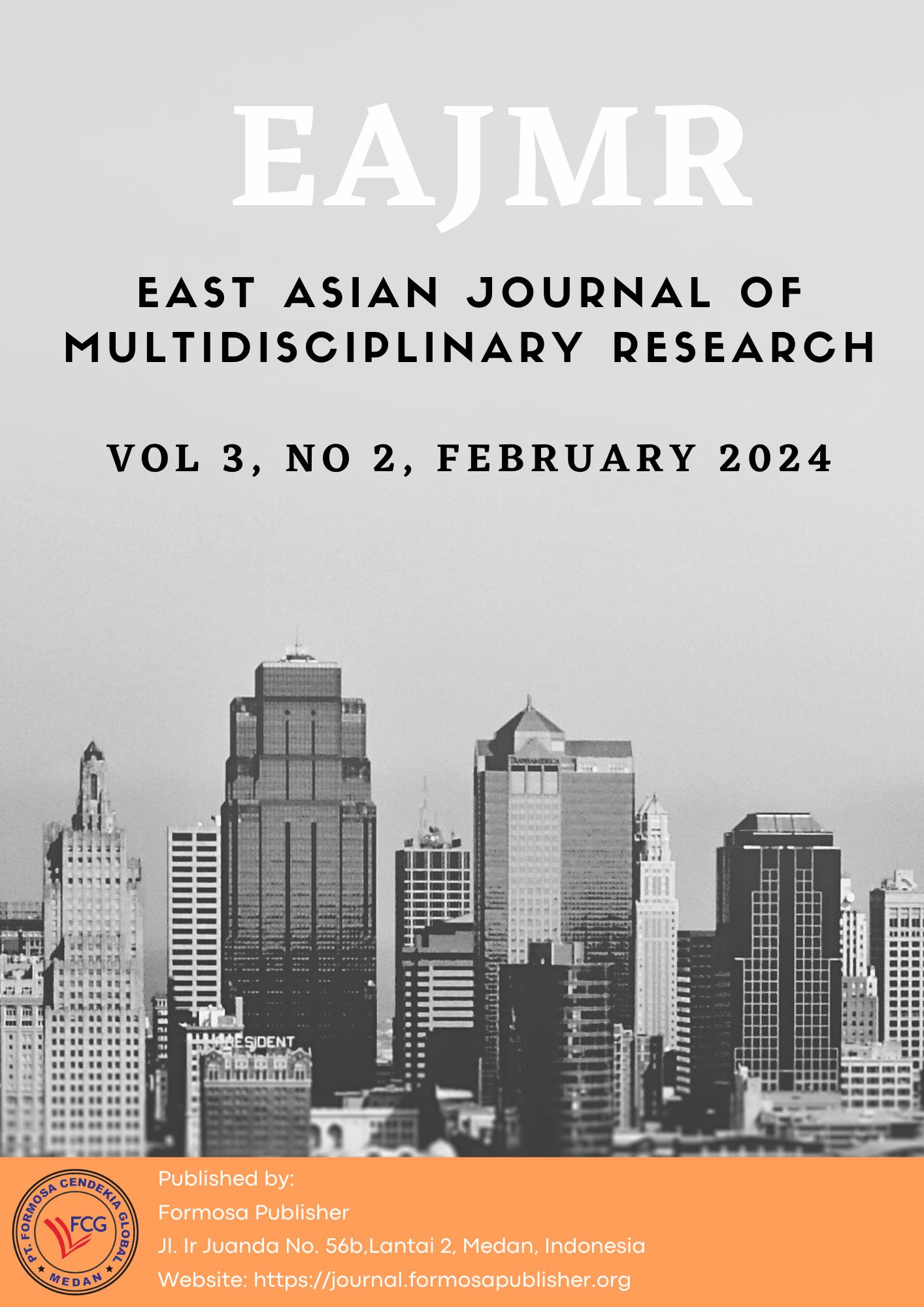Superiority of Female Characters in the Novel Kenanga and Tempurung by Oka Rusmini
DOI:
https://doi.org/10.55927/eajmr.v3i2.8205Keywords:
Superiority, Female Characters, NovelAbstract
This research describes the form of superiority of female characters and the contribution of superior characters to the women's movement in the Novel Kenanga and Tempurung by Oka Rusmini. Data was collected using reading techniques and note-taking techniques. Data were analyzed using psychoanalytic feminist literary criticism theory. As a result, the form of superiority of the female characters in the novel Kenanga with its character named Kenanga and the novel Tempurung by Oka Rusmini, namely Bu Barla and Saring, has the superiority of responsibility, hardworking, caring, intelligent, patient. The background to the emergence of superiority in the character Kenanga is found in the Novel Kenanga. The contribution for women is the desire of female writers to change perceptions in society which consider women as inferior human beings. The author wants there to be a change in perceptions in society so that the levels of women and men are considered the same.
References
Afeerakhanam & Sandhya. (2017). Marginalization of women in the Selected Novels of Manjukapur And Anita Nair: A Study. Journal of Research in Humanities and Social Science. 5(6): 91 - 97.
Barry P. (2010). Beginning Theory: Pengantar Komprehensif Teori Sastra dan Budaya. (Terjemahan bahasa Indonesia oleh Harviyah Widyawati dan Evy Setyarini). Jakarta: Jalasutra.
Esten. (2013). Kesusastraan Pengantar Teori dan Sejarah. Bandung: Peerbit Angkasa Bandung.
Friedan, B. (2001). The Feminime Mystique. W.W Norton & Company Inc. (online).
Hijazi, E. A. S. (2019). The Concept of Gender-Inequality in Sahar Khalifa’s Muzakarat Imra’ah Gher Waqeai’a: Feminist Critical Discourse Analysis. International Journal of Linguistic, Literature, and Translation. 2(6): 13–22.
Humm, M. (1986). Feminist Criticism. Great Britain: The Harvester Press.
Khayati. (2008). Pendidikan dan Independensi Perempuan. Musawa. 6(1): 19 - 35.
Lorber. J., & Martin, P. Y. (2012). The Socially Constructed Body. Iluminating Social Life: Classical and Contemporary Theory Revisited, 249.
Munira, W., Akhyar, M., & Djono, D. (2018). Womens leadership and gender equality in Aceh: A socio-historical perspective. International Journal of Multicultural and Multireligious Understanding, 5(4), 79–88.
Nurgiyantoro, B. (2013). Teori Pengkajian Fiksi. Yogyakarta: Gajah Mada University Press.
Rusmini, O. (2023). Kenanga. Jakarta: Gramedia Pustaka Utama.
Rusmini, O. (2023). Tempurung. Jakarta: Gramedia Pustaka Utama.
Singh, R. A. (2022). Women and Other Marginalized Sections in the Politics of Developing Countries. New Delhi: K.K. Publications.
Tong, R. (2006). Feminist Thought: A More Comprehensive Introduc on. Diterjemahkan dalam Bahasa Indonesia oleh Aquaini Priyatna Prabasmara. Bandung: Jalasutra.
Vickers, Adrian. (2012). Bali Tempoe Doeloe. Diterjemahkan ke dalam Bahasa Indonesia dari Travelling to Bali oleh Tim Komunitas Bambu. Depok: Komunitas Bambu.
Wardani. (2020). “Citra Perempuan dalam Novel Kala Karya Stefani Bella dan Syahid Muhammad”. Jurnal Alinea, 9(2): 164 – 172.
Wiyatmi. (2011). Psikologi Sastra. Yogyakarta: Kanwa Publisher.
Xu, J. (2017). Study on the Western Feminist Literary Criticism and Its Characteristics. International Journal of New Developments in Engineering and Society, 1(4).
Downloads
Published
How to Cite
Issue
Section
License
Copyright (c) 2024 Frisca Nabila Alvionita, Hartono Hartono

This work is licensed under a Creative Commons Attribution 4.0 International License.







.png)





















